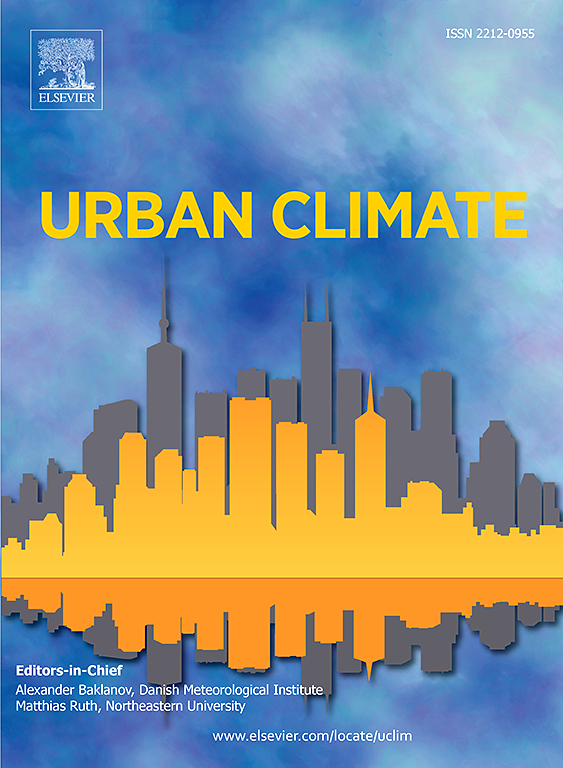How does anthropogenic heat emissions from buildings affect urban heat island intensity? Based on neighborhood scale and urban scale analysis
IF 6
2区 工程技术
Q1 ENVIRONMENTAL SCIENCES
引用次数: 0
Abstract
As global climate change intensifies, anthropogenic heat emissions from buildings (AHEB) have become a key factor in the deterioration of the urban thermal environment. This study investigated the effect of AHEB on the outdoor thermal environment and its contribution to the urban heat island (UHI) in different Local Climate Zones (LCZ) in Guangzhou City. This study explores the spatial distribution of AHEB induced temperature changes through numerical simulation by building an AHEB model. Secondly, the thermal storage effect of AHEB and its influencing factors are analyzed through statistical analysis methods. Finally, AHEB mitigation measures are proposed to quantify the impacts of AHEB on the urban environment. The results showed that a very compact low-rise residential neighborhood (LCZ2.5) exhibited ambient temperatures 1.3 °C higher than other layouts. Building density, height, and configuration significantly influenced the thermal storage effect of AHEB. The contribution of AHEB to UHI varied throughout the day, reaching a minimum of approximately 5 % between 3:00 p.m. and 5:00 p.m., while peaking between 2:00 a.m. and 6:00 a.m., contributing about 54 % to the UHI effect. This study proposes improvement measures for AHEB from four different perspectives. These findings offer valuable guidance for planning and designing residential neighborhoods in hot, humid areas, helping to mitigate AHEB adverse effects on the urban thermal environment.
建筑物的人为热排放如何影响城市热岛强度?基于社区规模和城市规模的分析
随着全球气候变化的加剧,建筑人为热排放已成为城市热环境恶化的关键因素。本研究探讨了不同局地气候带(LCZ) AHEB对广州市室外热环境的影响及其对城市热岛(UHI)的贡献。本研究通过建立AHEB模型,通过数值模拟探讨了AHEB诱导温度变化的空间分布。其次,通过统计分析方法,分析了AHEB的蓄热效果及其影响因素。最后,提出了AHEB缓解措施,量化了AHEB对城市环境的影响。结果表明:极紧凑低层住宅小区(LCZ2.5)的环境温度比其他布局高1.3℃;建筑密度、高度和结构对AHEB的蓄热效果有显著影响。AHEB对UHI的贡献在一天中各不相同,在下午3点至5点之间达到最低约5%,而在凌晨2点至6点之间达到峰值,对UHI的贡献约为54%。本研究从四个不同的角度提出了改善AHEB的措施。这些发现为湿热地区的住区规划设计提供了有价值的指导,有助于减轻AHEB对城市热环境的不利影响。
本文章由计算机程序翻译,如有差异,请以英文原文为准。
求助全文
约1分钟内获得全文
求助全文
来源期刊

Urban Climate
Social Sciences-Urban Studies
CiteScore
9.70
自引率
9.40%
发文量
286
期刊介绍:
Urban Climate serves the scientific and decision making communities with the publication of research on theory, science and applications relevant to understanding urban climatic conditions and change in relation to their geography and to demographic, socioeconomic, institutional, technological and environmental dynamics and global change. Targeted towards both disciplinary and interdisciplinary audiences, this journal publishes original research papers, comprehensive review articles, book reviews, and short communications on topics including, but not limited to, the following:
Urban meteorology and climate[...]
Urban environmental pollution[...]
Adaptation to global change[...]
Urban economic and social issues[...]
Research Approaches[...]
 求助内容:
求助内容: 应助结果提醒方式:
应助结果提醒方式:


